French Travel Destinations: Top of the World, Nord-Pas de Calais
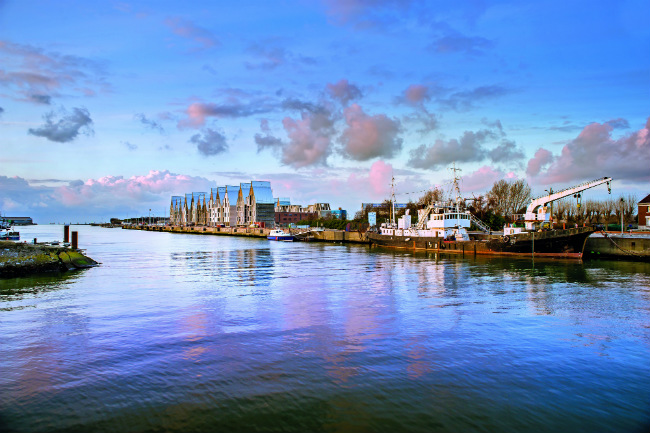
Separated from Great Britain by a narrow stretch of sea, the twin départements of Nord and Pas-de-Calais are pleasantly familiar yet delightfully different. Gillian Thornton explores the region’s coast, countryside and culture
Standing on the cliff top at Cap Gris-Nez with my back to France, I can clearly see the white cliffs of Dover sparkling in the late summer sunshine. The undulating coastline of home is just 32km away over the English Channel, though this narrow stretch of water has proved a more than effective barrier between the countries over the centuries.
In 1803, Napoleon amassed a huge army at Boulogne with his heart set on empire building; in 1940, German generals looked wistfully out to sea from Dunkerque after the epic evacuation of Allied troops. But no wannabe invader has successfully reached England from here since William of Normandy in 1066.
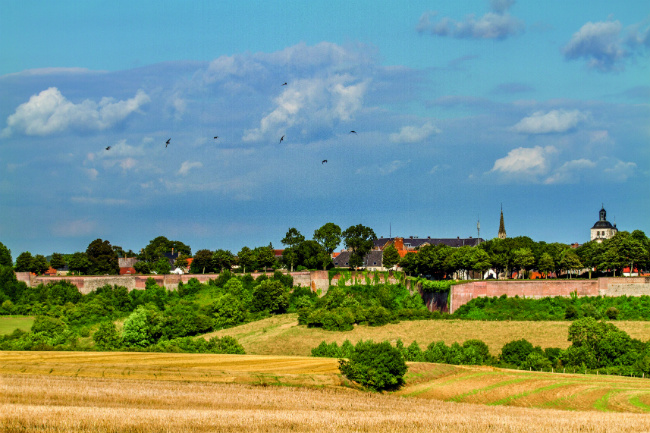
The countryside outside Montreuil-sur-Mer. Photo: C Plard
It’s a humbling thought that makes me contemplate, yet again, the weighty topic of Anglo-French relations. The Battle of Agincourt was fought here in Pas-de-Calais in 1415, and, in 1520, Henry VIII and François I staged a lavish display of royal one-upmanship near Calais at ‘The Field of the Cloth of Gold’.
Today, France’s two most northerly départements still bear the scars of two World Wars, both of which saw some of their fiercest fighting occurring on this soil. This coming year marks the centenary of the end of World War I, and Remembrance tourism here has been stronger than ever over the past five years, but there’s more to Pas-de-Calais and the Nord than this, and more than many people imagine.
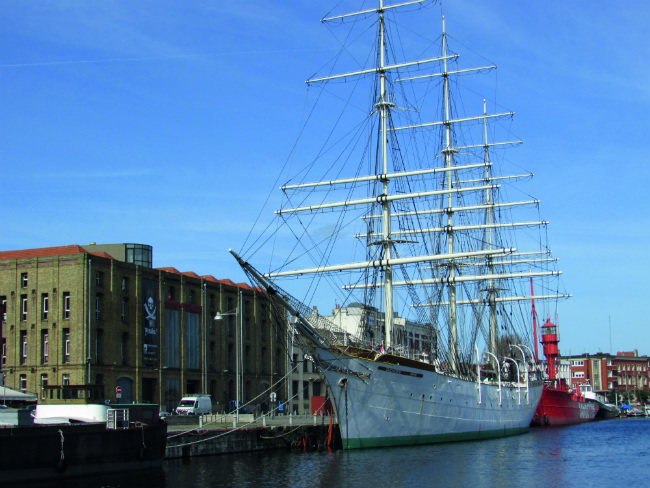
The Duchesse Anne, the last remaining full-rigged sailing ship under French flag, at the Port Museum at Dunkerque. Photo: Gillian Thornton
I’ve been travelling here regularly for 20 years but there’s always something new to discover, as I proved to myself again last summer. Turn your back on the Channel and Pas-de-Calais initially feels like one big farm with huge, rolling fields punctuated with wind turbines. To the south, the lush bocage landscape of the Seven Valleys offers a timeless tranquillity amidst small fields divided by hedges and woodland.
Turn inland from Dunkerque, however, to the Nord, and the level countryside along the Belgian border has a distinctly Flemish feel, dotted as it is with small communities with unpronounceable names. Locals here are known as the Ch’tis, because of their accent and dialect, and pretty Bergues was the setting for the 2008 blockbuster comedy Bienvenue chez les Ch’tis.
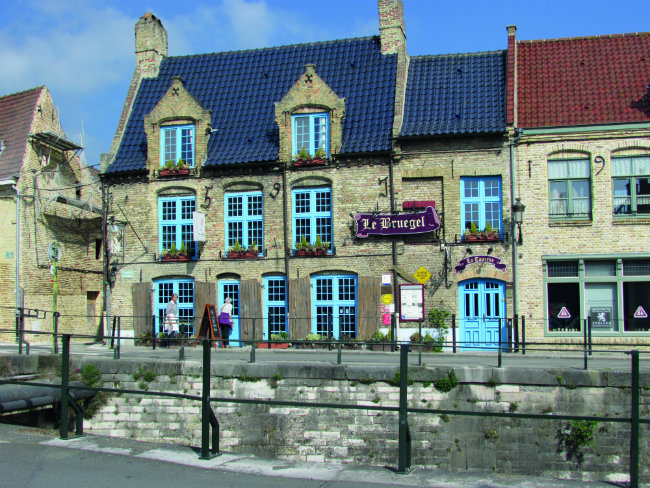
Canalside at Bergues. Photo: Gillian Thornton
Regional capital Lille is now a top city break destination, less than 90 minutes from London by Eurostar. But within living memory, Nord-Pas de Calais was an industrial hotspot of textile factories and coal mines around Lille, Roubaix and Lens. Now old workplaces have been transformed into industrial heritage museums, cultural centres and leisure facilities, and the former mining basin has been awarded a UNESCO listing for urban regeneration. And, as of last year, this once cosy twosome was joined to the three départements of Picardie to form the new Hauts-de-France region.
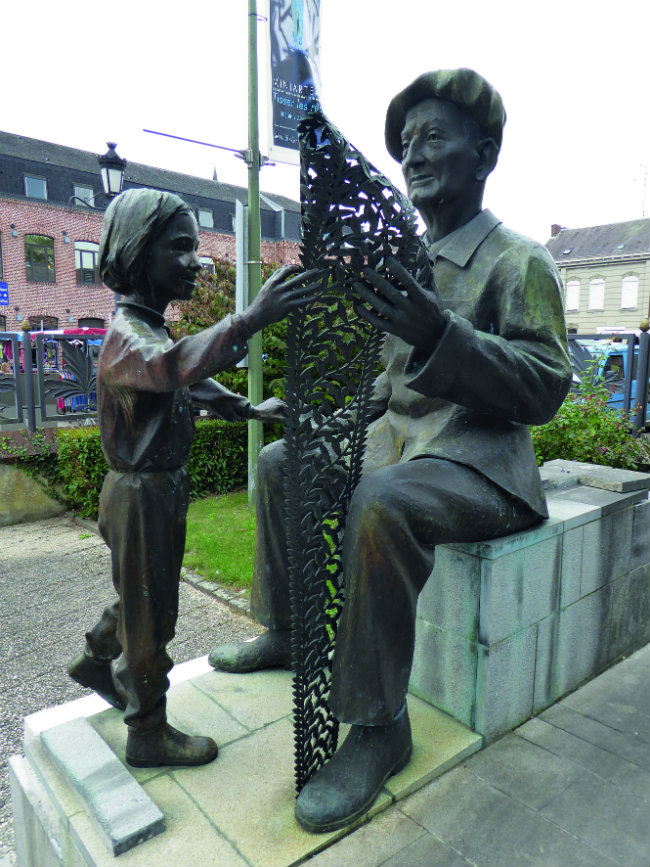
Outside the Lace Museum in Caudry. Photo: Gillian Thornton
SYMBOLIC STARTING POINT
For me, the twin headlands of Cap Blanc-Nez, to the east, and Cap Gris-Nez, some 12km to the west – which are classified amongst the 17 prestigious Grands Sites de France – form a symbolic starting point for any northern adventure. I lingered first at the smart new Maison du Site des Deux-Caps, where you can pick up walking and cycling leaflets, hire bikes, buy local produce, and introduce yourself to the region via the excellent interactive exhibition.
From busy ports to small fishing villages, chic resorts to protected natural areas, the region’s 150km of coastline offers huge variety. Snuggled up to the Belgian border, Dunkerque was on everyone’s lips this summer with the release of Christopher Nolan’s epic movie about the evacuation of May 1940. Do take an independent or guided tour of the town’s key remembrance sites, but don’t ignore the excellent Maritime Museum or a harbour tour by boat.
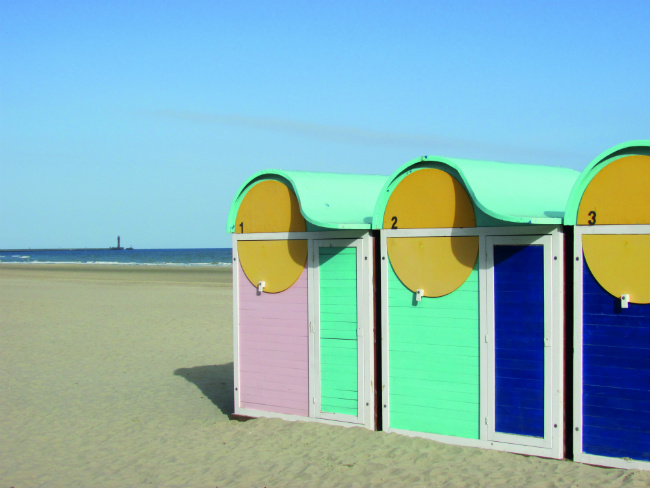
Beach huts at Malo-les-Bains. Photo: Gillian Thornton
England’s last possession in France, Calais is often overlooked by holidaymakers rushing off the ferry or Eurotunnel shuttle. This time, however, I stopped to take the lift up the bell tower of the Town Hall for a panoramic harbour view. Don’t miss Rodin’s statue of the six Burghers of Calais in the gardens below, nor the City of Lace and Fashion, housed in a former lace factory just a few minutes’ walk away. The permanent collections are completed by demonstrations of the impressive Leavers machines.
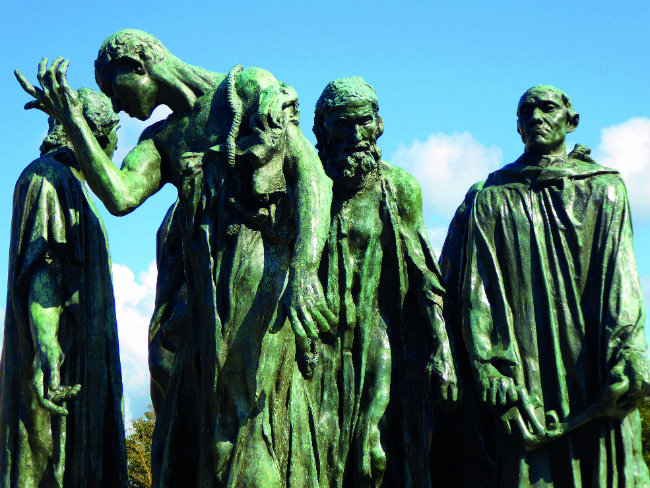
Rodin’s statue of the six Burghers of Calais. Photo: Gillian Thornton
BUSINESS OPPORTUNITY
Calais had no history of lacemaking until English industrialists from Nottingham saw a business opportunity to cater for French demand with mechanically made lace. Discover the full story through demonstrations on traditional looms, costumes, tools and techniques. Then carry on the discovery at the Lace and Embroidery Museum inland at Caudry, the town where the lace was made for the Duchess of Cambridge’s wedding dress.
South of Calais, there’s more history to be found above Boulogne’s busy fishing harbour in the Upper Town, dominated by the Notre-Dame basilica. Head underground to visit one of the largest crypts in France, recently re-opened after a five-year restoration programme. And take time to see the medieval château, home to the Museum of Fine Arts, where attractions range from Roman foundations to an outstanding collection of Egyptology.
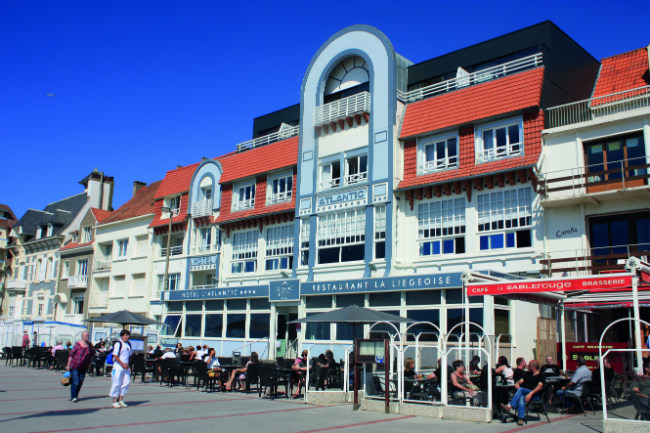
The sea front at Wimereux. Photo: Gillian Thornton
I’ve always had a soft spot for Le Touquet. Purpose-built in an area of sand dunes, it was so popular with wealthy Parisians that, in 1900, it was renamed Le Touquet-Paris-Plage. Take a walking or cycling tour of the Art Deco villas, get active on the broad sands, or relax with thalassotherapy. Every April, the beach at nearby Berck-sur-Mer hosts a spectacular international kite festival.
Inland from Berck, the pretty town of Montreuil-sur-Mer stands above the Canche, gateway to the Sept Vallées (the Seven Valleys) and a popular stopover for its cobbled streets, historic citadel and Victor Hugo connections. On two feet, or two wheels, you’ll find marked trails and protected natural areas to enjoy. Take a forest path in the Seven Valleys, stroll through the Dunes de Slack – the Flanders Dunes – and watch wildlife in the nature reserves of the Platier d’Oye and at Authie Bay.
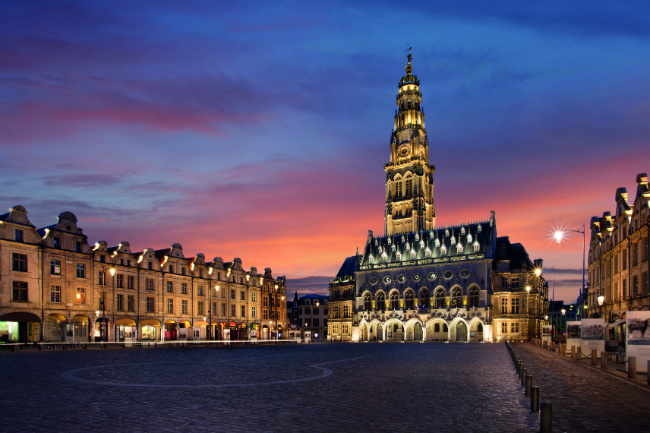
The Place des Héros in Arras took its current name in 1945. Photo: Fotolia
Inland from Calais, the Art and History Town of Saint-Omer stands on the edge of the Audomarois marshes, a unique area of market gardening awarded World Heritage status by UNESCO. The excellent Maison du Marais provides an interactive overview of marshland life, and a guided excursion in a traditional at-bottomed boat is a must-do.
Cross the departmental border into the Nord and a short drive brings you to the hilltop town of Cassel with its old windmill, huge square and far-reaching views. And in the east of the département, the rural tranquillity of the Avesnois takes many first-time visitors by surprise with its peaceful lakes, quiet forests and distinctive stone houses.
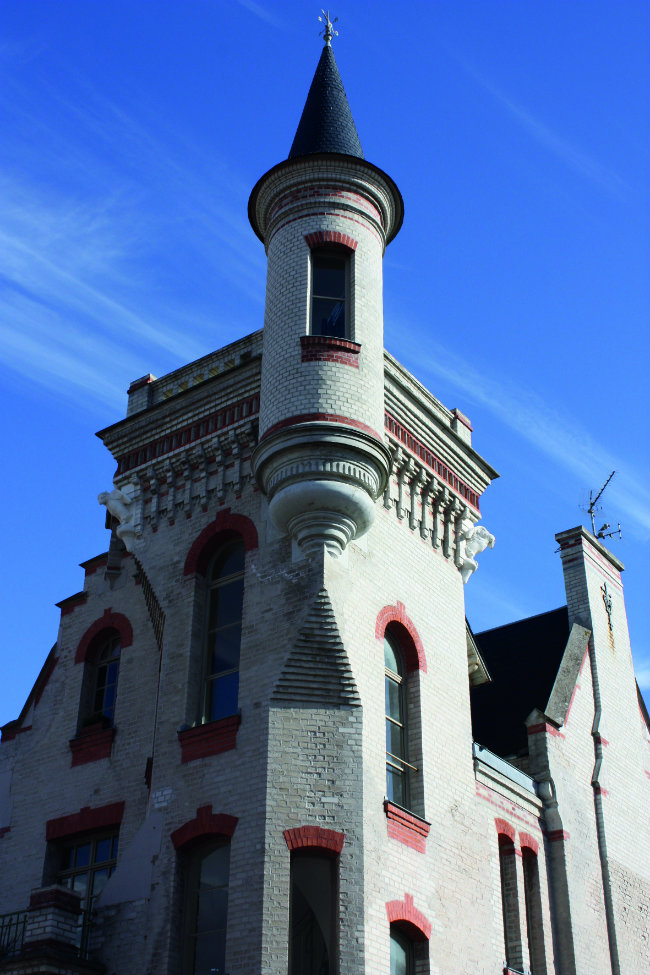
Le Touquet. Photo: Gillian Thornton
MUSÉES DE FRANCE
The vibrant city of Lille offers everything from art galleries and historic buildings to contemporary fashion design, festivals and exhibitions. But not for nothing is Nord-Pas de Calais known as the Region of Culture. With 48 collections classified Musées de France, it has more national museums than any French département outside Paris-Île-de-France.
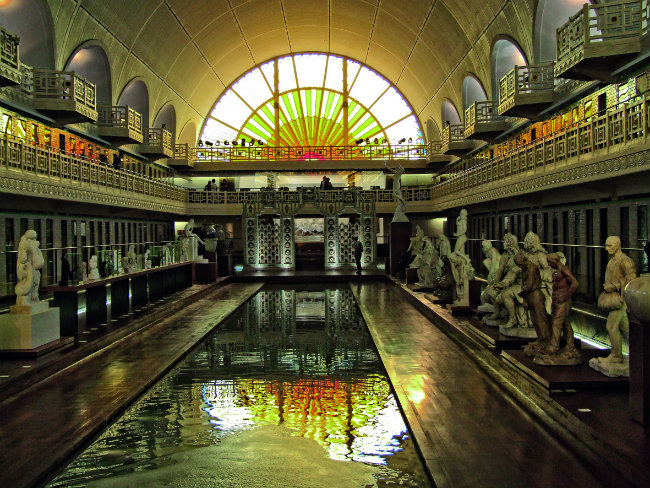
Musée la Piscine at Roubaix, a converted former baths, now the town’s Art and Industry Museum. Photo: Lille Metropole
Whatever your taste, you’ll find it here – contemporary art at LAAC in Dunkerque; Dutch and Italian Renaissance masters at Lille Fine Arts Museum; and more than 80 works by Matisse in his birth town of Le Cateau-Cambrésis. Relive the life and times of Napoleon at the Fine Arts Museum in Arras, where an exhibition staged in partnership with Versailles runs until November 18, 2018. Discover 300 years of high-class ceramics in the permanent exhibition at Desvres Ceramics Museum, and enjoy glassware across the ages at Musverre, the impressive new glass museum opened in October 2016 at Sars-Poteries in the Avesnois.
Many of these outstanding collections are housed in equally stunning buildings. In 2012, the former mining town of Lens was chosen for the first satellite museum of the Louvre in Paris, housed in an eye-catching glass building on the site of a former colliery.
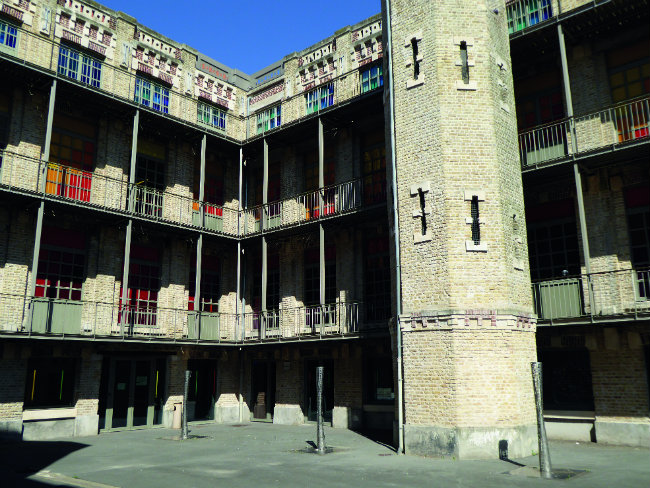
The interior courtyard of the City of Lace and Fashion. Photo: Gillian Thornton
Other buildings have been imaginatively given new leases of life, too. I love La Piscine, a former Art Deco swimming pool and public baths in Roubaix and now the town’s Art and Industry Museum. And this summer I discovered a Modernist gem close by at Croix. Designed by Robert Mallet-Stevens for textile magnate Paul Cavrois, the Villa Cavrois opened in June 2015 after a major refurbishment programme.
Among many earlier architects who left their mark here is Vauban, military architect to Louis XIV, who built his signature star-shaped ramparts around towns across France. The citadel at Arras is listed by UNESCO; at Gravelines you can circumnavigate his ramparts by electric boat; and at Ambleteuse you will see a rare example of a Vauban coastal fort.
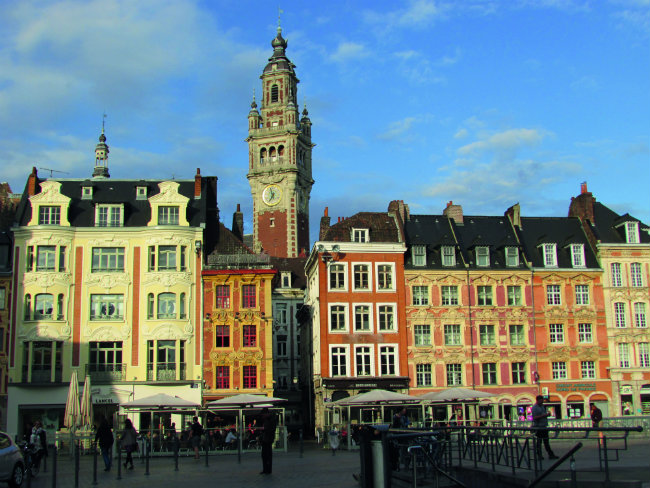
Lille’s Grand’Place has architecture typical of the Low Countries. Photo: Gillian Thornton
For a chilling insight into the events of World War II, visit La Coupole or the Blockhaus d’Éperlecques to appreciate how narrowly London missed an onslaught of V2 rockets. Dunkerque, meanwhile, tells its own story through the Operation Dynamo museum and other sites. And at Ambleteuse, I was amazed by the vast collection of international uniforms and memorabilia at the privately owned 39-45 Museum.
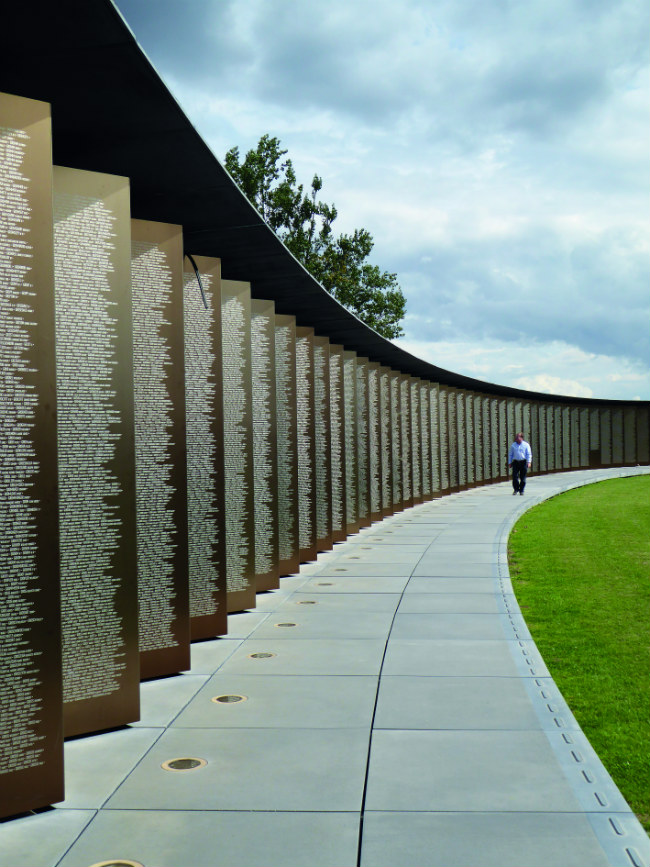
the Ring of Remembrance, where the names of more than half a million soldiers who fell in the Great War are recorded. Photo: Gillian Thornton
The centenary of World War I has been attracting Remembrance visitors from around the world. November the 26th saw the inauguration of the Cambrai Tank Museum 1917, featuring a British Mark IV tank that took part in the Battle of Cambrai.
The density of sites never ceases to amaze. At Neuville-Saint-Vaast – a short drive from the Canadian Memorial at Vimy Ridge and the largest French national war cemetery of Notre-Dame-de-Lorette – I passed the huge German war cemetery and, opposite each other, the Polish and Czechoslovakian memorials. And the Commonwealth casualties? Cemeteries are dotted everywhere.
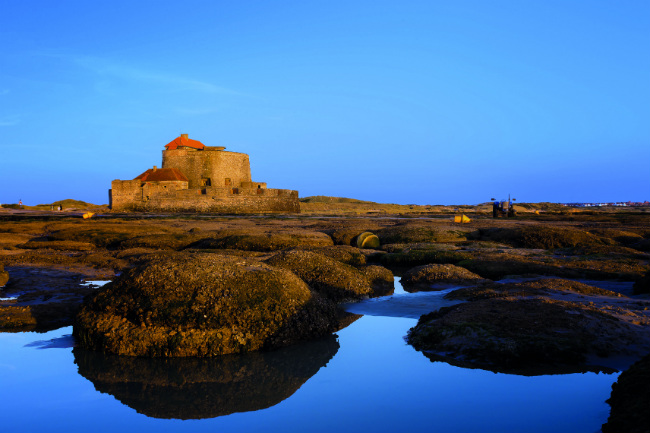
The sun sets over the Fort d’Ambleteuse, which was built by Vauban under the orders of Louis XIV to defend the port. Photo: Fotolia
Last summer I paid my first visit to the Lens 14-18 Great War History Centre, which brings the whole sorry story vividly to life through archive photos and artefacts, many never displayed before.
From this excellent free museum, it’s a five-minute drive to Notre-Dame-de-Lorette. Opposite the gates stands the Ring of Remembrance, inaugurated on November 11, 2014, and accessed down a long, gentle ramp. Here, 580,000 soldiers who fell in northern France in the Great War are commemorated in alphabetical order, without distinction by nationality or rank, on an ellipse of metal tablets. This humbling memorial is all the more powerful for its simplicity; the names painstakingly recorded in a new font poignantly named Lorette.
Like so many parts of Nord-Pas de Calais, it is surprisingly beautiful.
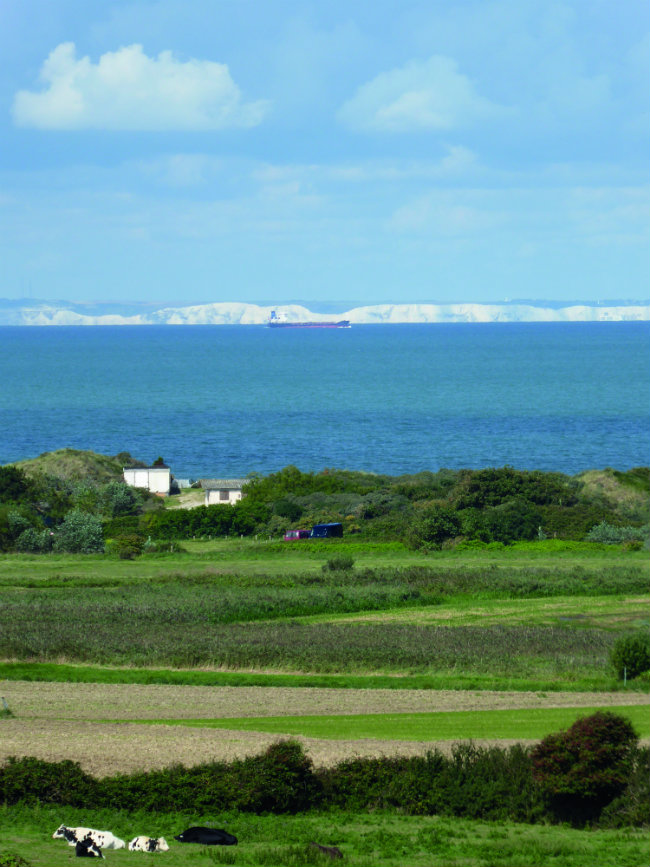
The white cliffs of Dover, viewed from Tardinghen. Photo: Gillian Thornton
A TASTE OF NORD-PAS DE CALAIS
Fishing, farming and industry have always co-existed here, so food lovers can expect the best in local produce, as well as some enthusiastic chefs able to put new twists on traditional fare.
CHEESE: Nord-Pas de Calais serves a well-stocked cheese board including Coeur d’Arras, Vieux Boulogne and Vieux Lille. Visit artisan producers like the Ferme du Vert in Wierre-Effroy and choose from 300 cheeses matured by Philippe Olivier at his famous shop in Boulogne. With its soft texture and tangy flavour, Maroilles is a distinctive flavour of the Nord and is used widely in cooking.
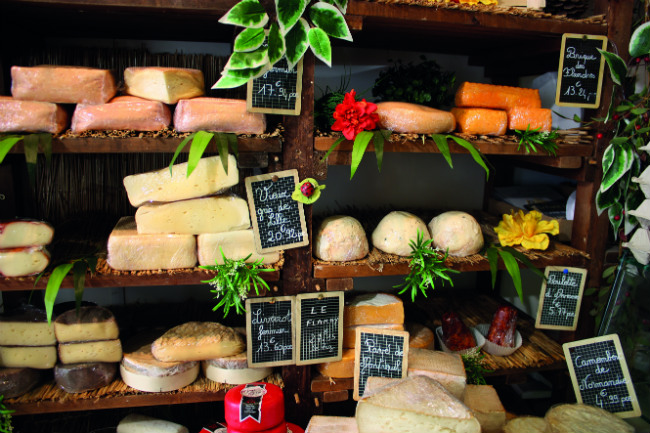
Regional cheeses. Photo: Gillian Thornton
SEAFOOD: Boulogne is France’s leading fishing port and a European hub for processing produce from the sea. Visit the daily fish market, the dawn fish auction, or take a boat trip to discover the bay. Audresselles and Wissant are still active fishing villages and there’s a fish market too at Étaples, home to the Maréis Sea Fishing Discovery Centre. Try the catch of the day at any local restaurant here and you are unlikely to be disappointed.
BEER: This region has a strong brewing tradition and micro-breweries abound. Many artisan beers are only sold through local shops and restaurants, providing a great experience for beer lovers. Try 2 Caps in Tardinghen, Brasserie du Pays Flamand in Blaringhem, Brasserie Cambier in Croix, or Brasserie du Cateau in Le Cateau-Cambrésis.
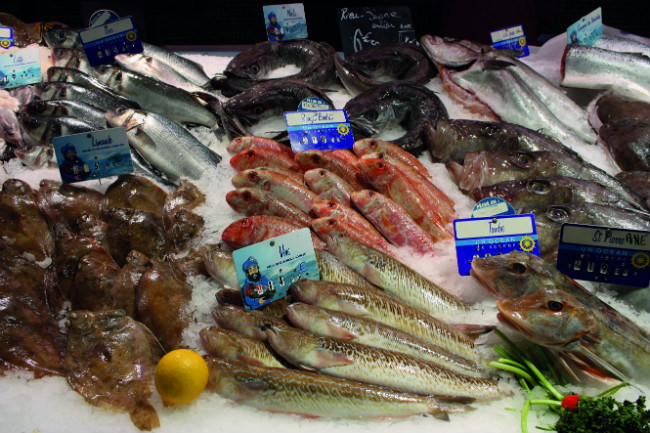
Fish at Le Touquet’s market. Photo: Gillian Thornton
ESTAMINETS: Not a food speciality as such, but traditional Flemish ‘pubs’ where you can drink local beers and eat hearty fare like Maroilles cheese tart, rich carbonnade flamande, and potjevleesch, a substantial dish of four white meats with vegetables in jelly.
MUSSELS AND CHIPS: A staple of the Nord in particular – and not just on the coast. Every year on the first weekend of September, restaurants in Lille compete for the biggest pile of mussel shells outside the door during La Braderie, a non-stop antiques and flea market that takes over the city from Saturday to Monday.
From France Today magazine
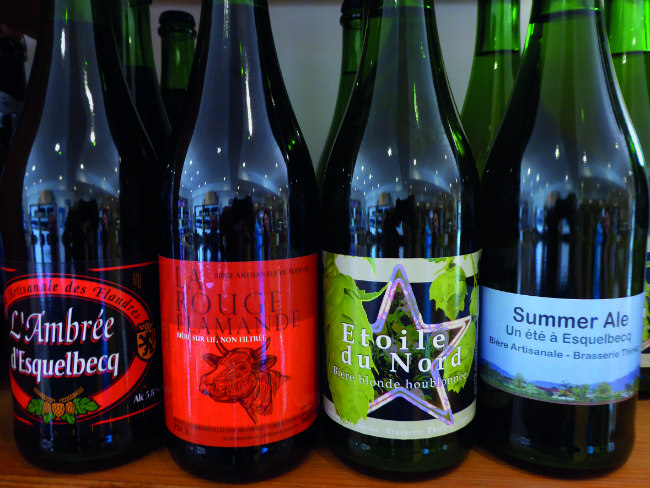
Regional beers. Photo: Gillian Thornton
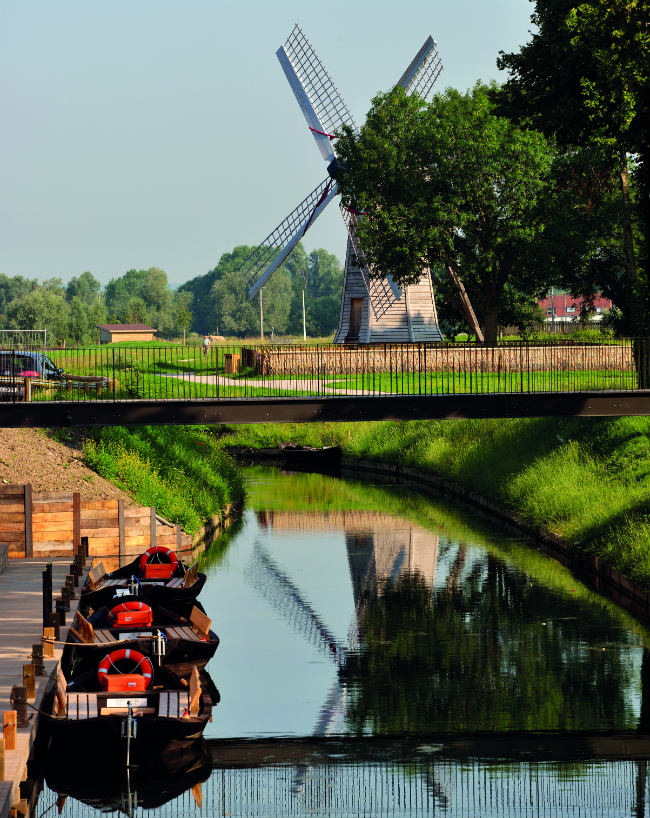
Windmill at the Maison du Marais, the House of the Marshes, Saint-Omer
Share to: Facebook Twitter LinkedIn Email
Leave a reply
Your email address will not be published. Required fields are marked *



